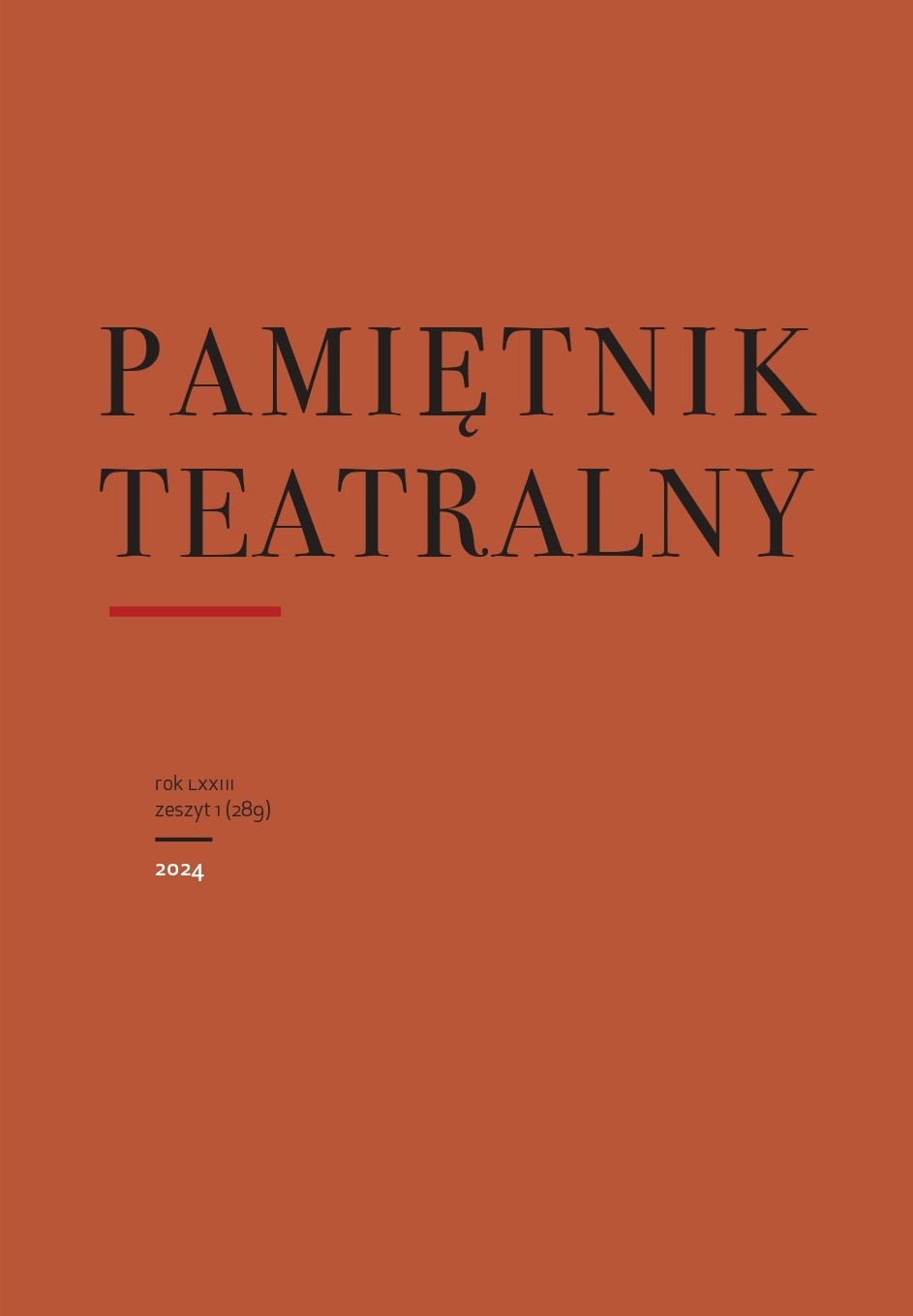Dance Embodiment of Sentimentalism in the Case of «The Wayward Daughter» Ballet
Abstract
This article presents an analysis of The Wayward Daughter, famed for being the most enduring piece in the ballet repertory all over the world. Sentimentalism, which influenced ballet as well, leaving its mark on the form and content of this art, contributed also to the creation of The Wayward Daughter in 1789. The context for this study of «The Wayward Daughter» by Jean Dauberval (the ballet’s originator and first choreographer) is provided by aesthetic, philosophical and cultural views and assumptions of great eightennth-century thinkers (e.g. Jean-Jacques Rousseau and Denis Diderot). Their ideas had become foundtions for the modern art of ballet, which has also been heavily influenced by one of the greatest reformers of the art of dance, Jean Georges Noverre. His student, Dauberval, using the rules developed by his Noverre, created the comic ballet and broke the monopoly of tragic ballets in vogue at the time. Thanks to its fast-paced action, somewhat naïve yet funny plot and numerous charming choreographic sequences, «The Wayward Daughter» is entertaining even for today’s audiences. Apart from analysing how the premises of sentimentalism apply to the form and content of a ballet show, the article discusses one of the most famous 20th-century choreographies for the ballet, devised by Frederick Ashton, which is performer by many ballet companies around the world to this day.
Keywords:
ballet, ballet history, dance, dance history, Jean Georges Noverre, Jean Dauberval, «The Wayward Daughter», sentimentalismReferences
Cahusac, Louis, de. La Danse ancienne et moderne ou traité historique de la danse. La Haye, 1754.
Google Scholar
Dębowski, Marek. Wstęp do: Diderot, Denis, Pisma estetycznoteatralne, 5–37.
Google Scholar
Diderot, Denis. Pisma estetycznoteatralne. Tłumaczenie Marek Dębowski et al. Gdańsk: słowo/obraz terytoria, 2008.
Google Scholar
Noverre, Jean Georges. Teoria i praktyka tańca prostego i komponowanego, sztuki baletowej, muzyki, kostiumu i dekoracji. Tłumaczenie Irena Turska. Wrocław: Zakład Narodowy im. Ossolińskich, 1959.
Google Scholar
Rousseau, Jean-Jacques. Nowa Heloiza. Tłumaczenie Ewa Rzadkowska. Wrocław: Zakład Narodowy im. Ossolińskich, 1962.
Google Scholar
Rzadkowska, Ewa. Wstęp do: Rousseau, Nowa Heloiza, iii–lxiv.
Google Scholar
Sobol, Elżbieta, i Lidia Drabik, red. Mały słownik języka polskiego. Warszawa: Wydawnictwo Naukowe PWN, 1995.
Google Scholar
Szmydtowa, Zofia. „Jan Jakub Rousseau: Dzieło i recepcja”. W: Rousseau – Mickiewicz i inne studia, 7–34. Warszawa: Państwowy Instytut Wydawniczy, 1961.
Google Scholar
Turska, Irena. Krótki zarys historii tańca i baletu. Kraków: Polskie Wydawnictwo Muzyczne, 2009.
Google Scholar
Turska, Irena. Przewodnik baletowy. Kraków: Polskie Wydawnictwo Muzyczne, 1989.
Google Scholar
Vaughan, David. Frederick Ashton i jego balety. Tłumaczenie Ludwika Woźnicka. Warszawa: Państwowy Instytut Wydawniczy, 1985.
Google Scholar
Wysocka, Tacjanna. Dzieje baletu. Warszawa: Państwowy Instytut Wydawniczy, 1970.
Google Scholar
Authors
Agnieszka NarewskaJagiellonian University Poland
https://orcid.org/0000-0002-4470-0522
doctoral student at the Faculty of Polish Studies of the Jagiellonian University. Graduate of the Krakow Vocational Ballet School, MA in Polish Philology and MA in Art. Studied Comparative Studies at the Jagiellonian University and Choreography and Dance Theory at the Fryderyk Chopin University of Music. Since 2010, she has been a teacher of classical dance and dance history at KVBS (KZSzB). At the Jagiellonian University she teaches the course “To Dance Literature. Choreographic staging of Shakespeare's works”. Publishes on taniecPOLSKA.pl, in Teatr, Ogrody Nauk i Sztuk and in post-conference monographs. Member of the Polish Choreological Forum.
Statistics
Abstract views: 385PDF downloads: 206
License
Copyright (c) 2016 Agnieszka Narewska

This work is licensed under a Creative Commons Attribution 4.0 International License.
The author grants a royalty-free nonexclusive license (CC BY 4.0) to use the article in Pamiętnik Teatralny, retains full copyright, and agrees to identify the work as first having been published in Pamiętnik Teatralny should it be published or used again (download licence agreement). By submitting an article the author agrees to make it available under CC BY 4.0 license.
From issue 1/2018 to 3/2022 all articles were published under a Creative Commons license CC BY-NC-ND 4.0. During this period the authors granted a royalty-free nonexclusive license (CC BY-ND 4.0) to use their article in Pamiętnik Teatralny, retained full copyright, and agreed to identify the work as first having been published in our journal should it be published or used again.









